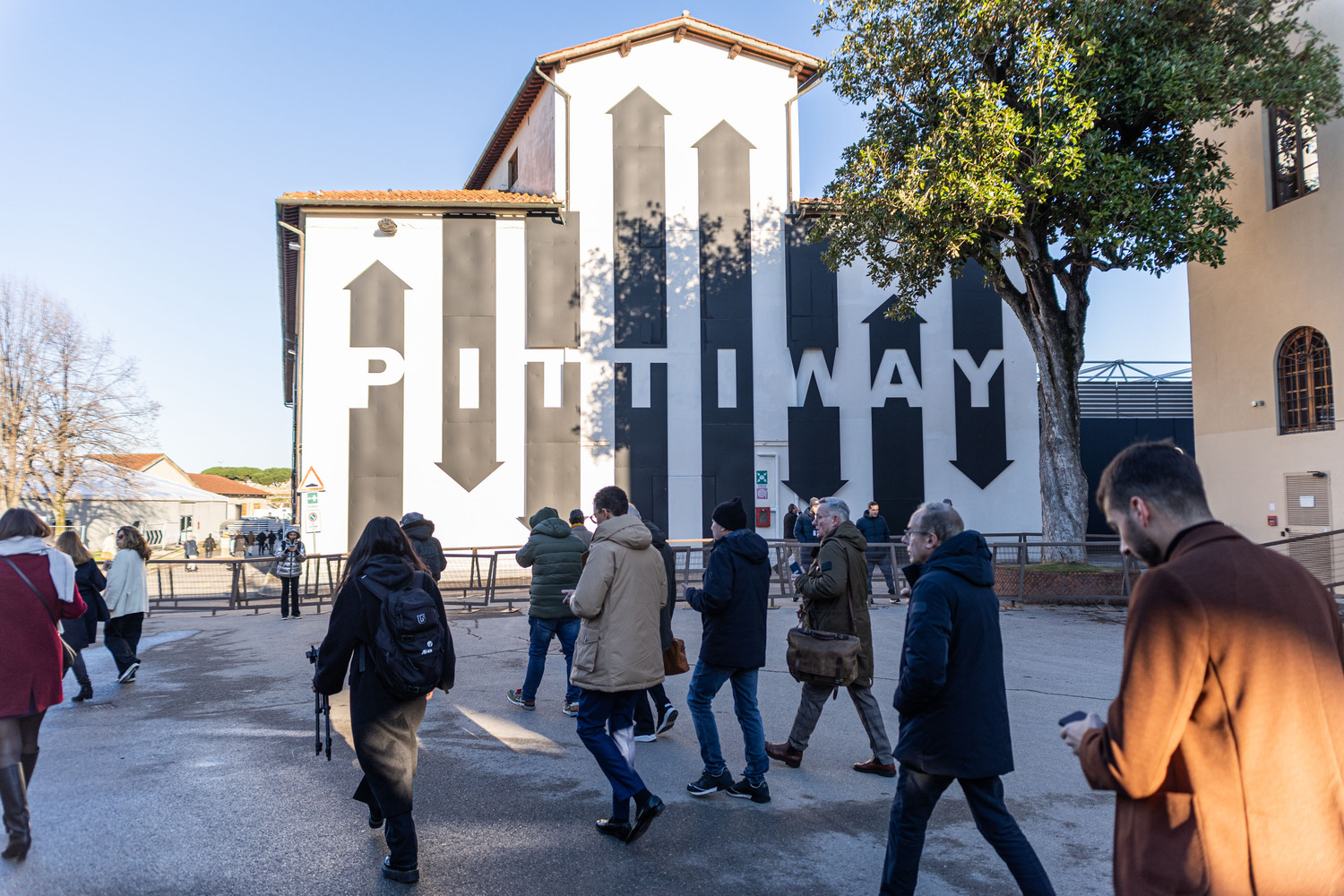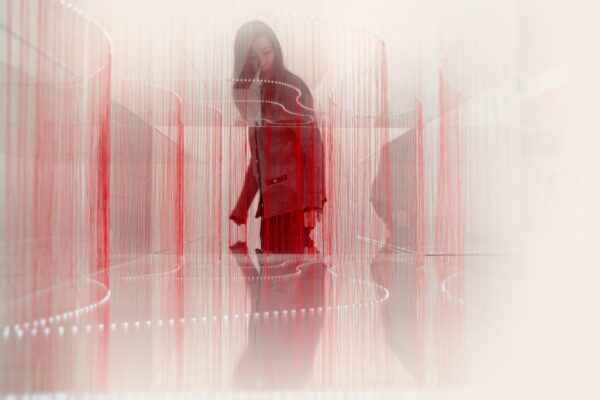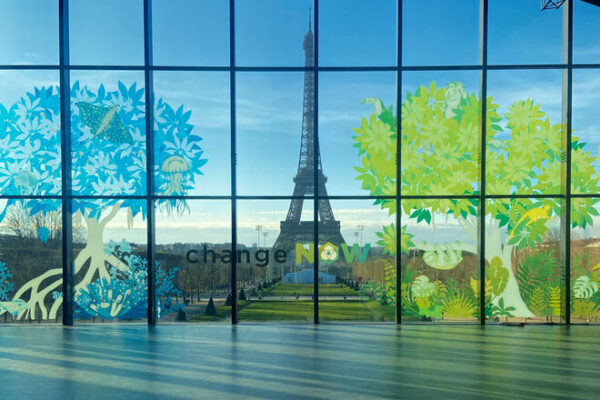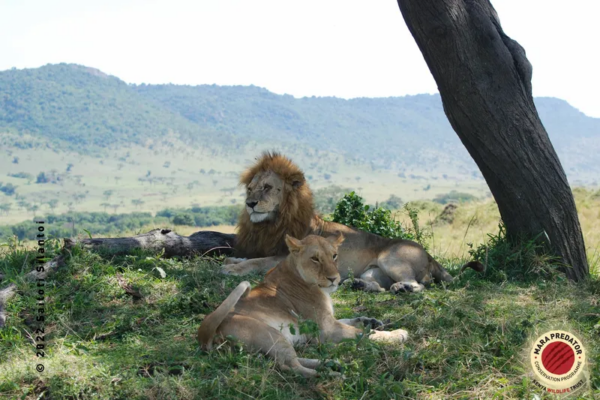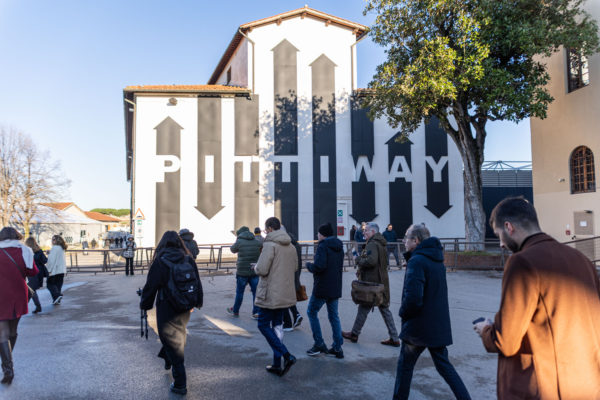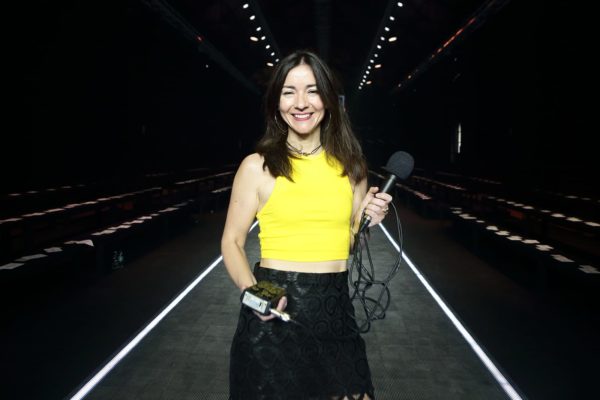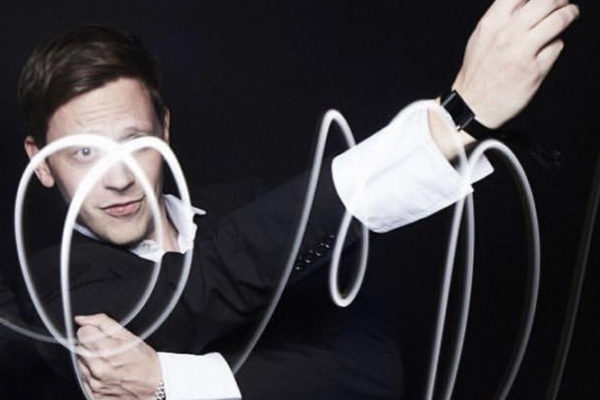Pitti Uomo Special Episode – Fair Segmentation with Antonio Cristaudo, known as the curator of Pitti. Discover the behind-the-scenes of Pitti. We talk about segmentation, the evolution of the fair towards lifestyle, new trends, bridges with other markets such as China. A rich conversation with a Pitti personality who tells us about his journey that began in 1995!
Introduction of the Podcast
Delphine Souquet [00:00:07] My name is Delphine Souquet and I welcome you to 2goodmedia, the French media, which analyzes the emergence of new strategies from a commercial and creative point of view. I am known in France as the Loïc Prigent of the podcast, a well-known insider of Parisian fashion shows. Because my specialty is covering the backstage of events in the creative industries in France and abroad, on podcast, to meet brand managers. We’re good to go. If I tell you that the pandemic has profoundly changed our lifestyle and that it has shifted the lines of the men’s fashion market. What do you say? This is how I started every recorded interview at Pitti Uomo, asking my guests what trends they see emerging.
The transformation of menswear
So men’s fashion moves a little slower than women’s fashion, but that also moves
Antonio Cristaudo, Curator of Pitti Uomo
Antonio Cristaudo [00:01:09] Antonio Cristaudo, commercial and development director for Pitti Immagine projects We experienced at the beginning of the pandemic, a moment in which street style exploded. But I always said “Yes, it’s an important moment, but it’s not like that forever”. Also because the moment we are again free, we will want to live in another way. So there is the beauty that, although men’s fashion compared to women’s fashion, I’m not saying that it is more conservative, it has fixed points and changes more slowly. But the desire for something new is always there. So men’s fashion moves a little slower than women’s fashion, but that also moves.
Delphine Souquet [00:01:54] Ludovic?
Ludovic Alban [00:01:56] Alors j’ai une question fondamentale: how are you organizing the segmentation of the Pitti Uomo salon?
The segmentation at Pitti Uomo
Segmentation is constantly changing
Antonio Cristaudo
Delphine Souquet [00:02:01] Ludovic has a fundamental question about salon segmentation. How do you do it?
Antonio Cristaudo [00:02:07] This is a very nice job, very… I’m not saying it’s difficult but you have to be very careful about because the evolution of the market is continuous, so this segmentation is born from the comparison with professionals, therefore journalists, industrial buyers, but also from the fact that we go around the world to see a bit of what is happening. Segmentation is constantly changing, because in fact, all the new projects this year are in fact, if you think of Pitti Pets. We thought there was this market need. Or Design, because Pitti is less and less a fair of clothing and wants to be, but not in a presumptuous sense, because we don’t think so, but [00:02:50]in a sense of purpose it wants to be a Lifestyle fair. [3.7s] Therefore, where the world of clothing is told in this case, which, however, also involves objects in fragrances and accessories. So clothing is important to us, but from there we then try to make various forays into various sectors.
Delphine Souquet [00:03:10] Now I am at the Ecoalf booth and and I am lucky enough to meet a very important person for the selection of Pitti. Can you tell me your name and your role at Pitti?
Antonio Cristaudo [00:03:23] Good morning everyone. Antonio Cristaudo, commercial and development director for Pitti Immagine projects.
The journey of Antonio Cristaudo
I arrived at Pitti Immagine in 1995
Delphine Souquet [00:03:30] You do a very important job for Pitti. Can you tell me about your experience and the evolution of Pitti over time.
Antonio Cristaudo [00:03:41] My journey is a bit of a special journey because I come from a completely different background, a law degree. But being a lawyer was not my passion, while [00:03:53]my passion has always been fashion. [2.1s] So, after graduating, I did two specific master’s degrees in this field of fashion communication and marketing and [00:04:04]I arrived at Pitti Immagine in 1995, [2.8s] in September as an intern. I was the assistant to the director of communication, then this path continued the following year, entering marketing and then above all with the task of developing the event. At first the Man, then, also the other Pitti Bimbo, fragrances. Not only looking for new exhibitors and therefore scouting, but above all to do new projects to segment the event.
in reality we were looking at the entire world of clothing, therefore also at the street, at sports…
And this was a really great challenge, because it must be said that when at the beginning of the 90s, Pitti was recognized only for the classic and only for Italian companies. So our task was precisely that voluntarily, in this case, to try to make our interlocutors understand that in reality we were looking at the entire world of clothing, therefore also at the street, at sports. And above all that we were very happy to be in Italy but we wanted an international fair
often don’t have a market in Italy, they come to Pitti to meet international customers and this is great for us
So today more than 40% of the brands are foreign and I am very happy when there is a foreign company, which then I don’t like this foreign term, an international company that wants to participate in Pitti. And they often don’t have a market in Italy, but [00:05:27]they come to Pitti to meet international customers and this is great for us. [4.6s] Because I often say that [00:05:34]Pitti, more than a fair, is a meeting point for the community, such as the Cannes Film Festival, the Venice Biennale. [8.2s] All of us professionals meet and therefore this internationality is very, very beautiful. I’m very pleased.
Delphine Souquet [00:05:51] Yes, it is a bit unique in the world, in France, for example, we see Pitti as a unique moment, it is the first in the year. So does it make a bit of a way for other fairs?
Antonio Cristaudo [00:06:08] Absolutely yes. And then I think that the other important thing about Pitti, I always say it, is composite, extraterritorial, so we don’t work in showrooms. Here both the company is freer to present itself and discuss. Even the buyer feels a little calmer in his vision of the collections, so this is a very important moment of discussion. [00:06:33]So this extra territoriality also facilitates the creation of new contacts and relationships. [6.6s]
Delphine Souquet [00:06:40] And for example, all the CEOs are here at Pitti. I do interviews with them. It’s a bit unique to be able to meet the CEO in person at a trade fair and also accessible.
the fact that CEOs come beyond commercial directors is a sign of attention to the market
Antonio Cristaudo [00:06:54] Absolutely, because I also think the comparison is important for them because you are rightly making a collection. But the moment of confrontation with the market is fundamental, so even for them, it’s ok there are commercial managers… But going in person to see how the fashion world is moving is also essential for them. So the fact that CEOs come beyond commercial directors is a sign of attention to the market. Here we actually have not only the sales managers, we have the buyers, but also the press. It’s the important one. At Pitti we have a very important number of international journalists. Even that is nice because the company not only sees feedback in its commercial proposal, but also in the more creative proposal that the press most likely experiences it differently, because the commercial always looks at what is being sold, while perhaps the press therefore feels freer to see research, experimentation. So a really important moment of discussion.
Delphine Souquet [00:07:58] Ludovic?
The Pitti Uomo segmentation and fashion trends
Delphine Souquet [00:08:06] Ludovic asks a fundamental question about salon segmentation, how do you do it?
Antonio Cristaudo [00:08:12] This is a very nice job, I’m not saying it’s very difficult, but you have to be very careful about it because the evolution of the market is continuous. So often when we do the new projects, because not only are we in Florence but we are traveling, we go around the world, we see the trends of the various important European, Asian or American cities. Because it is true that fashion is a proposition, but often fashion also collects what comes from the street, so all the projects in the end… This segmentation is born from the comparison with professionals, therefore journalists, industrial buyers, but also from the fact that we go around the world to see what is happening. [00:08:56]And segmentation is constantly changing. [2.4s] Because, in fact, all the new projects this year,like Pitti Pets, we thought there was this market need. Or Design, because Pitti is less and less a fair of clothing and wants to be, but not in a presumptuous sense, because we don’t think we are like that, but in a sense of proposal… it [00:09:22]wants to be a Lifestyle fair, [1.7s] therefore, where in this case the world of clothing is told, which, however, also involves objects in fragrances and accessories. So clothing is also important to us. But from there we then try to make various incursions into various sectors.
Delphine Souquet [00:09:40] One of the fundamental questions we have for CEOs is the question of how to transform men’s clothing? This segmentation can be found in brand strategy. Today it is a new and difficult thing I imagine. What do you think of this?
Antonio Cristaudo [00:10:07] It’s a difficult thing, but I think it’s enough to observe, in the sense that in the end we must also be a bit not only passionate about fashion, but of sociology. And then see a bit of the behaviors that we experienced at the beginning of the pandemic, a moment in which street style exploded… But I always said “yes, it’s an important moment, but it’s not like that forever.” Also because the moment we are again “free”, we will want to live in another way. The beauty is that, although men’s fashion compared to women’s fashion, I’m not saying it’s more conservative, has fixed points and changes more slowly. But the desire for something new is always there. Men’s fashion moves a little slower than women’s fashion, but so does that.
Delphine Souquet [00:11:01] And in your opinion, how can the new generations and the new aspirations they have be found in the current proposal?
Antonio Cristaudo [00:11:12] And this is a great question because the new generations certainly want timeless, timeless garments today. They want sustainable garments, even that. But at the same time they also want lasting things. So that is very important because we lived through a time when fast fashion was not very important. But it made some rules that are probably not good today. I think it’s also a bit there with the sociological aspect, this is what happens with food, it’s true. In recent years, we have seen that people are much more attentive to food than before and recognize a higher price positioning by virtue of a quality relationship. [00:12:00]I think that fashion is following the same path, so compatibly. [4.4s] But is this what end consumers are asking today: they want to buy less, but do they want to buy better?
Menswear transformation and new generations
there is a mix in the proposal where comfort is actually certainly essential, but even people want to be elegant
Delphine Souquet [00:12:12] A question from Ludovic?
Ludovic Alban [00:12:14] J’ai la sensation depuis après le Covid et avec la nouvelle reorganization du Pitti qu’il y a coexistence heureuse entre Tailoring and the clothing of all days. Avant il y avait un choc entre les défenseurs du tailoring et les autres. Avec les nouvelles générations j’ai l’impression qu’ils sont capables de choisir les moments qu’ils ont envie de vivre et non pas de porter un uniforme de tous les jours.
Delphine Souquet [00:12:43] Yes, a special question about today’s lifestyle and wardrobe. At Pitti, we can see that there is no longer a shock, a confrontation, an opposition between tailoring and dressing more comfortably. There is something more fluid. Is that true?
to create a wardrobe where you are not too much, neither classified as Tailoring nor classified as Streetwear, but a mix
Antonio Cristaudo [00:13:06] This is very true, because today there is a mix in the proposal where comfort is actually certainly essential, but even people want to be elegant, so in the end there is always that touch in which you are a bit sporty, but maybe there is the jacket, with the sneaker. [00:13:28]Try a bit to create a wardrobe where you are not too much, neither classified as Tailoring nor classified as Streetwear, but a mix. [9.0s] Certainly compared to previous seasons this makes us happy. There is a desire to dress. I am a bit radical on this one. I mean, [00:13:48]I say I like to dress, not cover up. [2.3s] Instead, for some time, people have placed less value on clothing. And that is not a matter of cost or second hand. It’s a matter of taste.
I think that personality is expressed in many things …
… of the choices of the music we listen to, the movies we watch, the books we read, but also how we dress, which in my opinion is a form of identity. And perhaps the most obvious thing at the end that tells you how you are, how you would like to be or how you present yourself. For me it is very nice. If it is difficult for me because I have never planned my dressing, in the morning I wake up, look at the wardrobe for a moment and decide in 2 minutes depending on the day. But I choose. It’s not like I take the first things at random. I’ve never liked that because I also find it a form of respect for others.
Difference between dressing and covering
Ludovic Alban [00:14:48] J’ai la sensation that tailoring pour les nouvelles generations va devenir une nouvelle valeur, mais bespoke à leurs désirs en fait, c’est plus du tout une obligation, un uniforme, c’est un moment où l’on a envie de s’habiller, un moment de plaisir…
Delphine Souquet [00:15:05] A feeling of Ludovic who thinks that for the new generations, tailoring becomes more of a choice. Not just a formal dress, but the pleasure of choosing to wear it.
when I get dressed I complete my round of choices by showing you my tastes
Antonio Cristaudo [00:15:25] Absolutely true. The new generations, like perhaps the children of my friends, have a nice jacket, but it really is a choice. So it’s just a way of how I said before expressing myself outside, I listen to a certain type of music, I eat in a certain way, I read some books and when I get dressed I complete my round of choices by showing you my tastes, which therefore [00:15:49]I don’t cover myself but dress, which in my opinion is fundamental. [3.3s] It is the expression of a personality that is too beautiful.
Pitti Uomo and China
Delphine Souquet [00:15:57] Another question about the Guest Nations pavilions. I remember a few years ago there was, for example, Guest Nation China. This was very interesting. Now how do you build bridges with, for example, China or the Asian market?
Chinese designers were very interesting because they had studied in other schools and had returned to their home and then began to mix their experiences with their traditions.
Antonio Cristaudo [00:16:16] So it’s a great question, this in the sense that we monitored China’s propposal because at a certain point we noticed that [00:16:24]Chinese designers [0.4s] were very interesting because they had studied in other schools or other parts of the world, in Europe, in America and [00:16:33]had returned to their home and then began to mix their experiences with their traditions. [5.4s] So it was beautiful.
Then the pandemic happened, so everything stalled a bit. Precisely for this January edition. You can see that the bridges are already reopening and therefore we will get to work together again. We have already started with Asians, but then I think that every time the focus we make is on geographical areas other than us that bear their testimonies and I think it’s interesting. Even in June we will definitely do a Guest Nation project. This year we are continuing our collaboration with Scandinavia Manifesto. We are very happy and they are happy. We are happy because we bring another vision and they are happy because they show up in a context in which they dialogue with other styles.
Delphine Souquet [00:17:26] And is Pitti Uomo present in China?
Antonio Cristaudo [00:17:30] We were present in China with commercial and press correspondence and we were also doing… Because Pitti not only organizes fairs, but often does road shows before the events to present. And Shanghai is one of those stops. Now the borders have finally opened and so we hope to return there soon too.
How to work of Pitti Uomo segmentation
It is a strange work, in the sense that it is composed of… Before, it was a lot of traveling and office. Today there are three phases
Delphine Souquet [00:17:56] Fantastic. You travel a lot. Can you tell me about your work?
Antonio Cristaudo [00:18:01] It is a strange work, in the sense that it is composed of… Before, it was a lot of traveling and office. Today there are three phases. Traveling definitely and then going in person to see the various realities that are stores or fairs… At the same time, online information. Because even that… Think of reading 15 newsletters a day that come from China, Germany, France, is essential. And then at the same time, then there is the work of studying all this information in depth. In the end, companies must be studied but not studied and examined to find the hair in the egg. They must be studied and examined because within a context like Pitti they must be placed in the correct place. So then it’s our job to see how the company behaves, what revenue it has. What type of scaling does it have on the market and then try to find the correct location. They recognize this because segmentation is fundamental, with many buyers arriving even from abroad. I think it’s a form of respect for them too.
Pro or against avatars at Pitti Uomo
I prefer the real to the virtual
Delphine Souquet [00:19:13] The last question I ask to all the interviews for or against avatars in the fashion industry. When will they arrive at Pitti?
Antonio Cristaudo [00:19:23] I wouldn’t say pros or cons, because then the market evolves, but basically I am one for the real and therefore I prefer the real to the virtual. I’ve always said that even in difficult times. When we have done all the digital projects, however, in the end the collections must be touched, it is quite another… It is said that a person has five senses with an avatar the five senses do not exist, so touching a fabric, seeing it, for example a leather bag smell, an avatar does not give it, unless later in the future… They don’t do it. But I think we’re saying they’re pro real and against avatars. Personally, however, the world then evolves, so we’ll see.
Delphine Souquet [00:20:15] Also because besides that you don’t follow trends… Wait, take some time to see if something is trendy, or if it’s a fundamental thing, a trait, an important aspect of the market to translate into the fair isn’t it?
Pitti Uomo does not follow Fashion trends
Antonio Cristaudo [00:20:38] Absolutely not. Let’s say that we look at all the trends, we observe them, we don’t judge them, we observe them. And then we try to bring them into our event, when we see that in reality there is actually a project with the substance behind it absolutely. It’s just because it often happens in society. Are these fires of a trend? No, we don’t work that way. We watch, we shoot, we document ourselves, we think. If it is also correct for us. Because it is not certain that the trend is the trend that is correct for the market but not for us. Maybe, so there’s an analysis job, let’s cross our fingers before doing them!
Delphine Souquet [00:21:19] Thank you very much, it was an honor and a pleasure.
Antonio Cristaudo [00:21:22] It was also a pleasure for me, also because I really like to tell these things, because there is often a simplification of things and instead things need to be analyzed a bit. These are the positive and negative aspects, but they must be analyzed and so I thank you because this type of podcast, of speeches goes a little deeper and therefore I think it’s worth it.
Delphine Souquet [00:21:45] Exactly that is our goal and we are very happy.
Outro del Podcast
Antonio Cristaudo [00:21:49] Thanks to you and good work. Delphine Souquet [00:21:51] And happy Pitti. Hi podcast! I’m Delphine and you’re listening to 2Good podcast. Thank you for listening to this episode recorded at Pitti Uomo. All episodes of this January 2023 edition are available on the 2GoodMedia.com website. If you liked this episode you will sure like next one with The CEO of Kiton, Antonio de Matteis.
You will also find the photos of the event and the transcript of the podcast episodes in three languages: French, English and Italian. If you have discovered this report, don’t forget to subscribe to our biennial Pitti Uomo newsletter, which covers the key moments of this important men’s fashion show.
And this year, for the first time, we will publish a Pitti Uomo Podcast Newsletter, also available in Chinese. See you soon on 2Goodmedia.
A complimentary gift for your loyalty!
As a token of appreciation for your loyalty, 2GoodMedia partners with WhatRocks to offer complimentary crypto for you to donate to your charities of choice from the list of 200+ organizations across the world.
Already a WhatRocks member?
Scan (or click from your mobile) the QR code below to collect your crypto rewards for good.
Not a WhatRocks member yet?
Click here to open your free WhatRocks account
Credits : Photographies courtesy of Pitti Immagine ; Audio and editorials : all rights reserved to 2goodmedia


